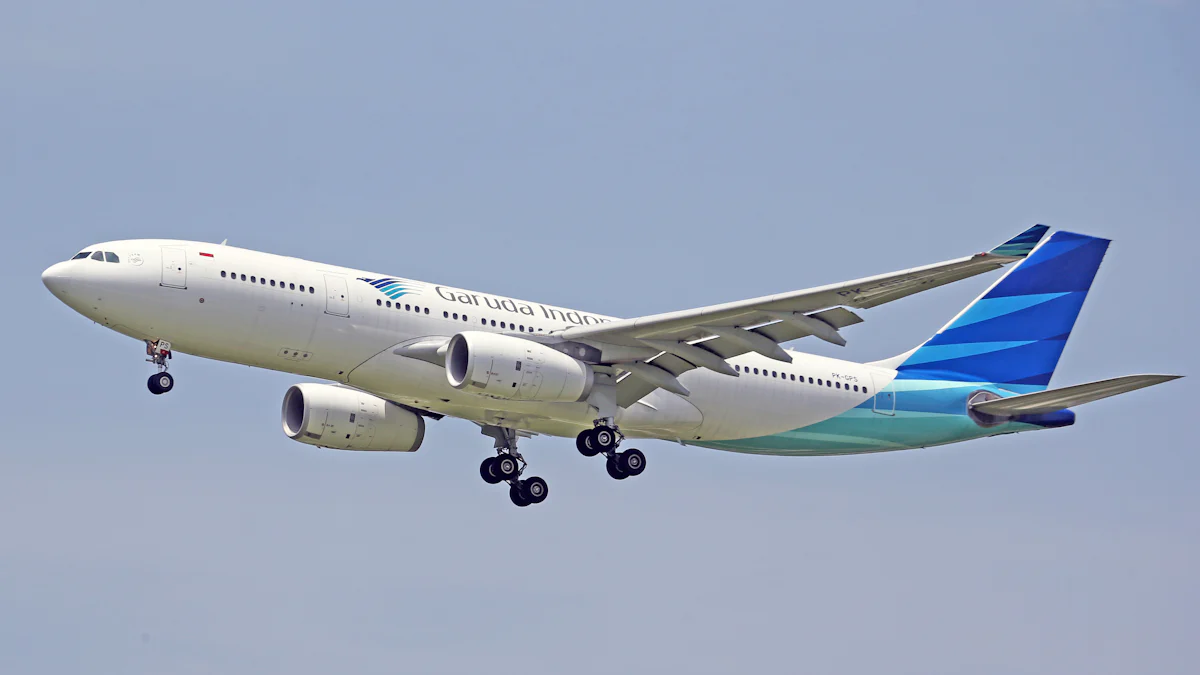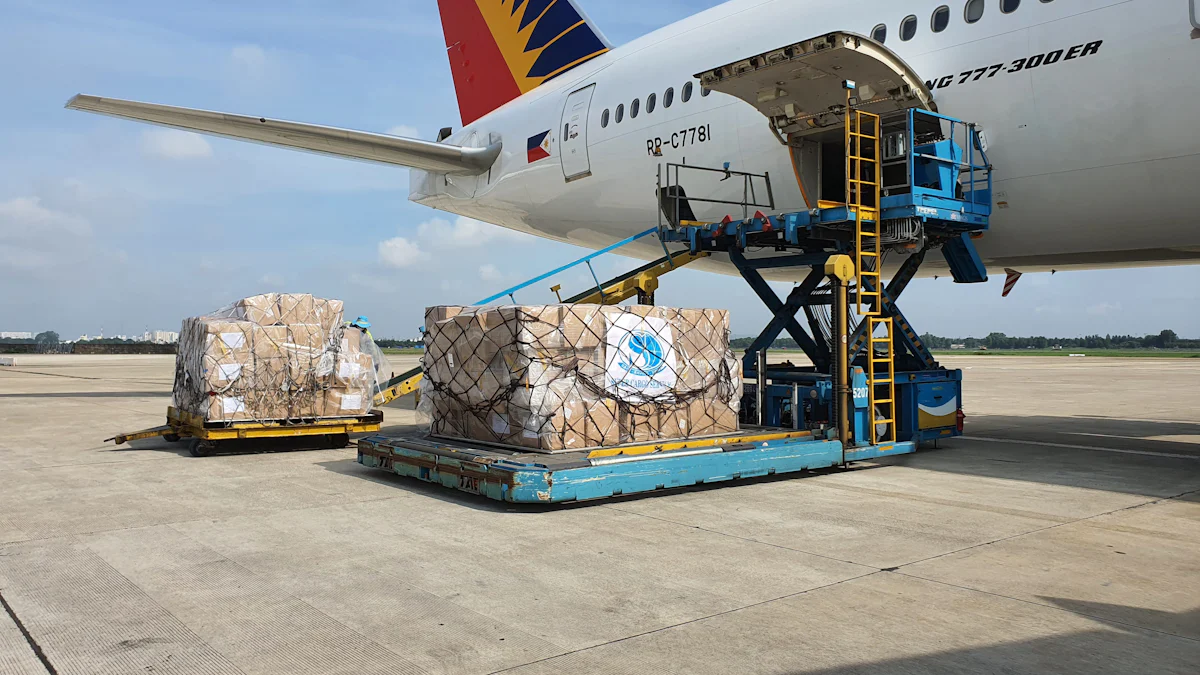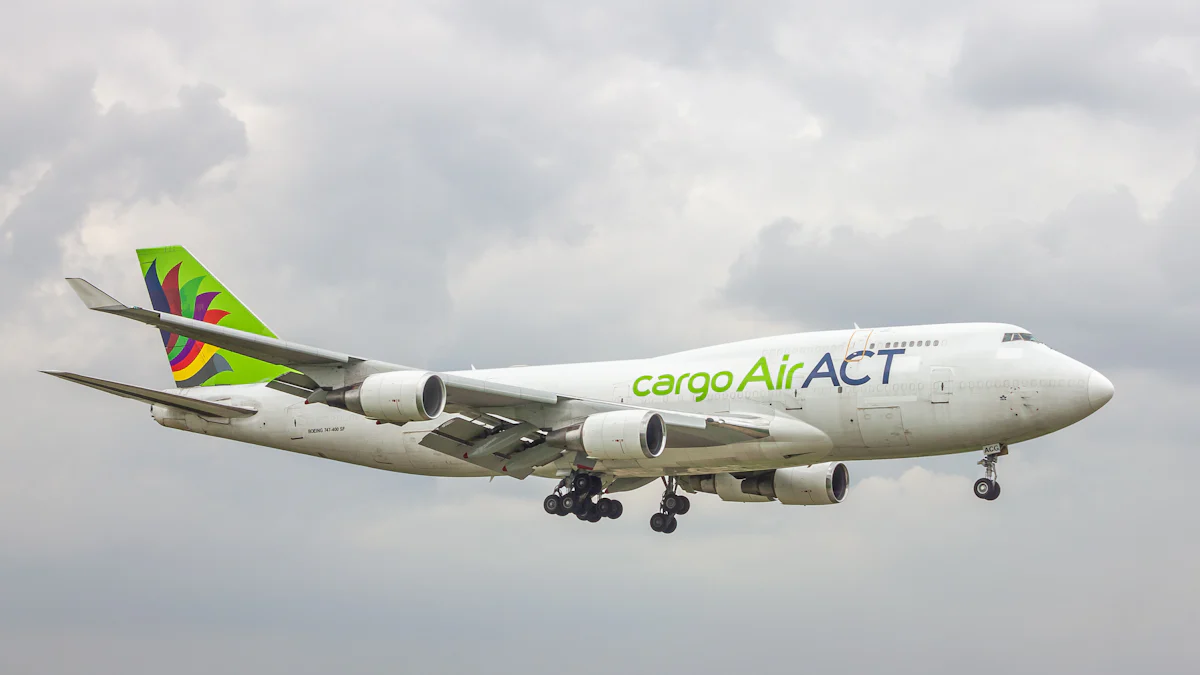2025 Air Cargo Trends and Challenges in a Year of Adaptation

The year 2025 marks a pivotal moment for the global air cargo industry. With e-commerce driving unprecedented demand, air freight volumes are projected to reach 72.5 million tonnes, reflecting a 5.8% annual growth. This surge highlights the sector's critical role in connecting continents and supporting global trade. At the same time, sustainability goals push the industry to innovate, adopting greener technologies and efficient practices. Stakeholders like JUSDA lead this transformation, ensuring the sector adapts to evolving challenges in this year of adaptation while maintaining efficiency and reliability.
Key Trends in Air Cargo for 2025

Supply and Demand Dynamics in a Year of Adaptation
The impact of booming eCommerce on air cargo demand
The rapid expansion of the e-commerce sector continues to reshape the global air freight landscape. In 2025, air cargo volumes are projected to reach 72.5 million tonnes, reflecting a 5.8% annual growth. This surge is largely driven by e-commerce growth, particularly originating from Asia, where online shopping has become a dominant force. The rise of cross-border ecommerce businesses has increased the demand for faster and more reliable shipping solutions. Air freight plays a pivotal role in meeting these expectations, ensuring timely delivery of goods across continents.
According to the International Air Transport Association (IATA), the ongoing delays in ocean shipping and tight freighter capacity further amplify the reliance on air cargo. This trend highlights the critical importance of air freight in supporting new growth and shifts in ecommerce.
Shifts in global trade patterns and their implications for air and ocean freight
Global trade patterns are undergoing significant transformations, impacting both air and ocean freight. The relocation of manufacturing hubs to regions like Southeast Asia has created new trade routes and increased the complexity of logistics networks. Air freight providers must adapt to these changes by optimizing their operations to handle fluctuating demand. The shift towards regionalized supply chains also influences the distribution of cargo traffic, requiring strategic adjustments to maintain efficiency. These developments underscore the need for innovative solutions to navigate the evolving trade landscape.
Traffic Growth and Capacity Management
Balancing capacity with fluctuating demand in global shipping
The air freight industry faces the challenge of balancing capacity with unpredictable demand. While global air cargo traffic is expected to grow at an annual rate of over 4% in the coming decades, capacity constraints remain a pressing issue. In 2025, the maximum growth in available cargo capacity is projected to reach 4.4%, which may not fully align with the rising demand. To address this, air freight operators are investing in advanced technologies and data-driven strategies to optimize capacity utilization. These efforts aim to enhance operational efficiency and minimize disruptions in the supply chain.
Regional variations in air cargo traffic and their impact on sustainability
Regional differences in air cargo traffic significantly influence sustainability efforts. Asia, as a major hub for e-commerce, experiences higher cargo volumes, which increases the environmental impact of air freight operations. To mitigate this, the industry is adopting greener practices and technologies. For instance, optimizing flight routes and improving fuel efficiency can reduce carbon emissions. These measures align with the broader goal of achieving sustainability in air freight while accommodating regional traffic variations.
Sustainability Innovations in Air Cargo
Adoption of Sustainable Aviation Fuels (SAF) and green technologies
Sustainability remains a top priority for the air freight industry in 2025. The adoption of Sustainable Aviation Fuels (SAF) represents a significant step towards reducing the carbon footprint of air cargo operations. SAF, derived from renewable sources, offers a cleaner alternative to traditional jet fuel. Many air freight providers are also exploring green technologies, such as energy-efficient aircraft designs and advanced propulsion systems. These innovations contribute to the industry's commitment to achieving net-zero emissions.
Development of electric and hybrid cargo aircraft for a sustainable future
The development of electric and hybrid cargo aircraft marks a transformative shift in the air freight sector. These aircraft promise to revolutionize the industry by offering environmentally friendly alternatives to conventional planes. Electric and hybrid models reduce reliance on fossil fuels, lower operating costs, and minimize noise pollution. As these technologies mature, they are expected to play a crucial role in shaping a sustainable future for air freight.
Economic and Geopolitical Challenges in Global Shipping
Rate Trends and Market Volatility
Managing pricing strategies amidst inflation and competitive pressures
The air freight market in 2025 faces significant challenges due to inflation and fluctuating demand. Rising costs of goods and services have created pressure on pricing strategies, forcing businesses to adapt quickly. Air freight providers must carefully balance competitive pricing with profitability. The volatility in the air freight market has also been influenced by shifts in consumer behavior and global economic conditions. Companies are increasingly relying on innovative solutions to manage these challenges effectively.
Rising Fuel Prices and Operational Costs
Strategies to mitigate fuel cost increases through innovation
Fuel prices remain a critical factor influencing the air freight market. Geopolitical tensions in key oil-producing regions, such as Saudi Arabia and Russia, have led to price volatility. These fluctuations increase operational costs for air freight providers, creating challenges in maintaining profitability. To address this, the industry is investing in innovative strategies to mitigate fuel cost increases.
One effective approach involves adopting energy-efficient technologies. Advanced aircraft designs and optimized flight routes contribute to reduced fuel consumption. Additionally, the use of alternative fuels, such as Sustainable Aviation Fuels (SAF), offers a cleaner and more cost-effective solution. These innovations not only lower operational costs but also align with the industry's sustainability goals.
Geopolitical Tensions and Trade Barriers
Navigating trade restrictions and tariffs with integrated supply chain solutions
Geopolitical tensions and trade barriers present significant challenges for the air freight market. Tariffs and trade restrictions disrupt global supply chains, increasing the complexity of logistics operations. For example, trade disputes between major economies often result in higher costs and delays. Businesses must navigate these obstacles to maintain the flow of goods and meet customer expectations.
Technological and Workforce Adaptations in a Year of Adaptation
Advancements in Air Cargo Technology
Use of AI and machine learning for demand forecasting and supply chain optimization
Artificial Intelligence (AI) and machine learning are transforming air freight operations. These technologies enable precise demand forecasting, allowing businesses to predict shipment volumes and optimize resource allocation. AI-driven systems analyze vast datasets, identifying patterns and trends that improve decision-making. For example, automated sorting systems powered by AI enhance efficiency by reducing turnaround times and minimizing errors.
Machine learning also plays a critical role in supply chain optimization. By analyzing historical data, it identifies bottlenecks and suggests improvements to streamline operations. This ensures smoother coordination across supply chains, enhancing the reliability of air freight services. Companies adopting these technologies gain a competitive edge by improving operational accuracy and reducing costs.
Implementation of blockchain for supply chain transparency and security
Blockchain technology is revolutionizing transparency and security in air freight. It creates a decentralized ledger that records every transaction and movement within the supply chain. This ensures data integrity, traceability, and trust among stakeholders. Blockchain minimizes paperwork, reduces the risk of fraud, and streamlines cargo handling processes.
According to a LinkedIn article by Kalea Texeira Zebhe, blockchain enhances trust by providing an immutable record of transactions. This innovation reduces errors and accelerates operations, making it a valuable tool for air freight providers.
The implementation of blockchain also strengthens security. It prevents unauthorized access to sensitive information, ensuring that only verified parties can access shipment details. This level of transparency builds confidence among customers and partners, reinforcing the reliability of air freight services.
Workforce Challenges and Solutions
Addressing labor shortages in the air cargo sector through upskilling
Labor shortages present a significant challenge for the air freight industry. The demand for skilled workers has increased due to the growing complexity of operations. To address this, companies are investing in upskilling programs that equip employees with the necessary expertise to handle advanced technologies.
Training initiatives focus on areas such as automation, AI, and blockchain. These programs prepare workers to operate sophisticated systems, ensuring seamless integration of new technologies into daily operations. Upskilling not only addresses labor shortages but also enhances workforce productivity, enabling the air freight sector to meet rising demands effectively.
Sustainability and Environmental Goals in Air and Ocean Freight

Decarbonization Efforts in Air Cargo
Industry-wide commitments to net-zero emissions and the role of SAF
The air freight industry has embraced a unified commitment to achieving net-zero emissions by 2050, marking a significant milestone in its sustainability journey. Airlines, manufacturers, and regulators are collaborating to reduce carbon emissions through innovative strategies. One of the most impactful measures involves the adoption of sustainable aviation fuel (SAF). Derived from renewable sources, SAF offers a cleaner alternative to conventional jet fuel, significantly lowering greenhouse gas emissions during operations.
Modernizing fleets with fuel-efficient aircraft has also become a priority. Airlines are investing in advanced designs that reduce fuel consumption and align with global environmental regulations. These efforts not only minimize the environmental impact of air freight but also reduce operational costs, creating a win-win scenario for businesses and the planet. The industry's focus on decarbonization underscores its dedication to balancing economic growth with environmental responsibility.
The air cargo sector in 2025 stands at a transformative juncture, defined by a year of adaptation. Key trends, such as the rise of ecommerce and advancements in technology, present immense opportunities for growth and innovation. However, challenges like rising operational costs, geopolitical tensions, and workforce shortages demand strategic foresight and proactive planning. Businesses must embrace resilience and leverage predictive analytics to navigate this dynamic landscape. JUSDA's innovative solutions, including the JusLink platform and green initiatives, empower stakeholders to adapt effectively, ensuring efficiency and sustainability in this pivotal year of adaptation.
See Also
Exploring 5 Key Trends for Supply Chain Efficiency
Understanding Key Trends in Logistics Risk Management
Discovering Innovations in Sea Freight Logistics for 2024
Get Prepared: Latest Transport Tech Trends for Supply Chains
Embracing Change: Tech Innovations in Supply Chain Management
